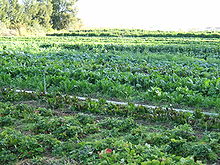Introduction
Microbes as biofertilizers enhance soil fertility and plant growth by fixing atmospheric nitrogen, solubilizing phosphorus, and decomposing organic matter, promoting sustainable agriculture
Microbes as Biofertilisers
Requirement
(1) The use of the chemical fertilizers to meet the ever-increasing demand of agricultural produce has contributed significantly to environmental pollution. So there is a need to switch to organic farming i.e. raising of crops through the use of biofertilisers.

(2) Biofertilisers are organisms that enrich the nutrient quality of soil. The main sources of biofertilisers are bacteria, fungi and cyanobacteria.

(3) Bacteria:-
(i) Rhizobium forms symbiotic association with root nodules of leguminous plants and fix atmospheric nitrogen into organic forms, which is used by plants as nutrients
(ii) Bacteria like Azospirllum and Azotobacter can fix atmospheric nitrogen while while free living in the soil.
(iii) Aulosira is non symbiotic N2 fixer of rice fields.
(4) Fungi:- Fungi also forms symbiotic associations with roots of higher plants, known as Mycorrhiza. Many members of the genus Glomus form mycorrhiza. The fungal symbiont absorbs phosphorus from soil and passes it to plants. Plants having such associations also show resistance to root borne pathogens, gets shelter and food from this association

Types of Mycorrhiza:-
(i) Ectomycorrhizae (Ectotrophic or Ectophytic)– Mycorrhiza absorb and store nitrogen, phosphorus, potassium and calcium.
(ii) Endomycorrhizae (Endotrophic or Rndophytic):- These are also called vesicular arbuscular mycorrhizae or VAM, It has significant role in phosphorus nutrition in plants.
(5) Cyanobacteria:- Some cyanobacteria can fix atmospheric nitrogen, e.g. Anabaena, Nostoc, oscillatoria, etc. In paddy fields, they serve as an important biofertilisers.
Advantages
Nitrogen Fixation: Certain microbes, like Rhizobium, live in the root nodules of leguminous plants and fix atmospheric nitrogen into a form that plants can absorb and use. This reduces the need for chemical nitrogen fertilizers.
Phosphate Solubilization: Microbes such as Bacillus and Pseudomonas can solubilize phosphate from insoluble compounds in the soil, making it available for plant uptake. This enhances the phosphorus nutrition of plants
Potassium Mobilization: Some bacteria and fungi can release potassium from soil minerals, improving the potassium nutrition of plants. This process is particularly important in potassium-deficient soils.
Phytohormone Production: Many biofertilizer microbes produce phytohormones like auxins, gibberellins, and cytokinins, which promote plant growth and development. For example, Azospirillum species are known for their ability to produce auxins
Mycorrhizal Associations: Mycorrhizal fungi form symbiotic relationships with plant roots, extending the root system and enhancing water and nutrient uptake. This symbiosis also improves soil structure and health
Biocontrol Agents: Some biofertilizer microbes act as biocontrol agents by producing antibiotics or inducing systemic resistance in plants, thereby protecting them from pathogens. Trichoderma species, for example, are effective against soil-borne diseases.
Enhancement of Soil Structure: Biofertilizers can improve soil structure by producing polysaccharides that help bind soil particles together, increasing soil aeration and water retention
Decomposition of Organic Matter: Certain microbes help decompose organic matter, releasing nutrients that are then available for plant uptake. These microbes, such as actinomycetes, play a crucial role in nutrient cycling
Reduction of Greenhouse Gas Emissions: Using biofertilizers can reduce the need for chemical fertilizers, which are often associated with the release of greenhouse gases like nitrous oxide. This makes biofertilizers a more environmentally friendly option
Algal Biofertilizers: Cyanobacteria (blue-green algae) such as Anabaena and Nostoc are used as biofertilizers, particularly in rice paddies. They fix atmospheric nitrogen and also produce growth-promoting substances
Biofertilizer Consortia: Combinations of different microbial species can be used together as biofertilizer consortia. These consortia can have synergistic effects, providing multiple benefits to plants and soil health.
Endophytic Microbes: Some biofertilizer microbes, known as endophytes, live inside plant tissues without causing harm. These microbes can promote plant growth and provide resistance to stress and diseases.
Plant Growth-Promoting Rhizobacteria (PGPR): PGPRs are a group of bacteria that colonize plant roots and promote growth by various mechanisms, including nitrogen fixation, phosphate solubilization, and production of growth hormones. Examples include species of Azospirillum, Azotobacter, and Pseudomonas.
Sustainable Agriculture: The use of biofertilizers is a key component of sustainable agriculture. They help maintain soil health, reduce dependency on chemical inputs, and support organic farming practices.
Innovative Applications: Research is ongoing into innovative applications of biofertilizers, such as coating seeds with beneficial microbes, using microbial biofilms, and developing microbial consortia tailored to specific crops and soils
Biofertilizers are substances that contain living microorganisms which, when applied to seeds, plant surfaces, or soil, promote growth by increasing the supply or availability of primary nutrients to the host plant. These microorganisms include bacteria, fungi, and algae that enhance soil fertility naturally.
Microbial biofertilizers work by establishing a symbiotic relationship with plant roots, where they convert essential nutrients from an unavailable form to a form that plants can easily absorb. For example, nitrogen-fixing bacteria convert atmospheric nitrogen into ammonia, which plants can use, while phosphate-solubilizing bacteria break down insoluble phosphates into soluble forms.
The benefits of using microbial biofertilizers include:
Enhanced soil fertility: They enrich the soil with beneficial microorganisms.
Improved plant growth: They enhance nutrient uptake and stimulate plant growth.
Sustainable agriculture: They reduce the need for chemical fertilizers, leading to less environmental pollution.
Cost-effective: They can be more affordable than chemical fertilizers and improve long-term soil health.
While microbial biofertilizers offer many benefits, they do have some limitations:
Environmental dependency: Their effectiveness can be influenced by soil conditions, temperature, pH, and moisture.
Specificity: Some biofertilizers may be crop-specific, requiring careful selection for optimal results.
Storage and handling: They need to be stored and handled properly to maintain the viability of the microorganisms.
Common microorganisms used as biofertilizers include:
Nitrogen-fixing bacteria: Such as Rhizobium, Azotobacter, and Azospirillum.
Phosphate-solubilizing bacteria: Such as Pseudomonas and Bacillus.
Mycorrhizal fungi: Such as Glomus species that form symbiotic associations with plant roots to enhance nutrient and water uptake.
Cyanobacteria: Such as Anabaena and Nostoc, which are used in paddy fields for nitrogen